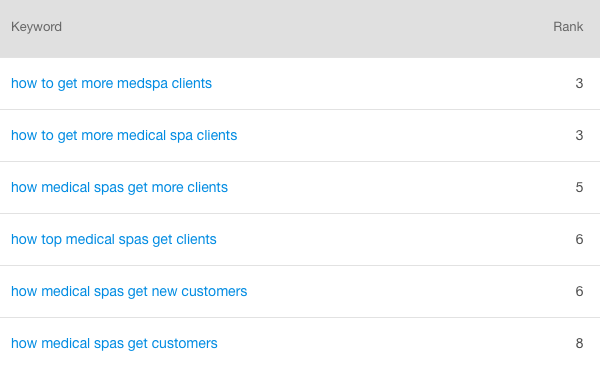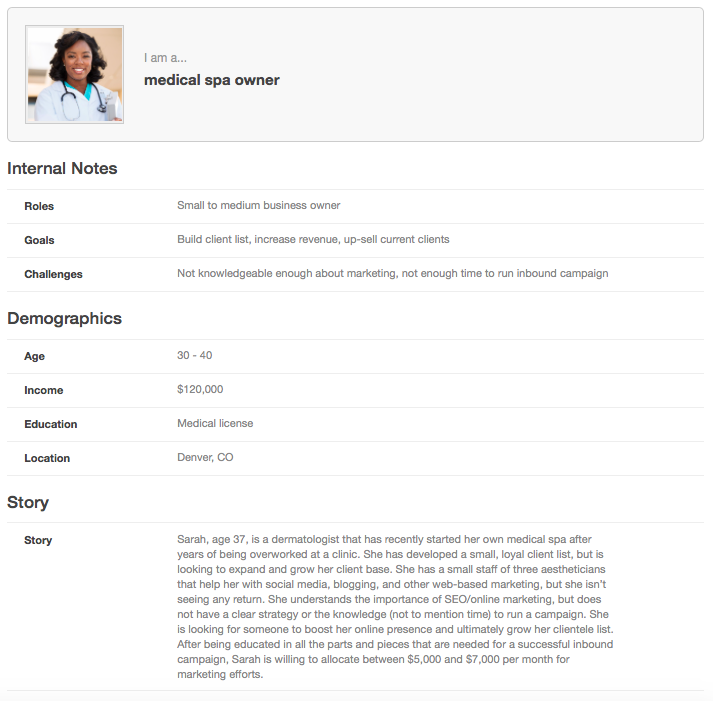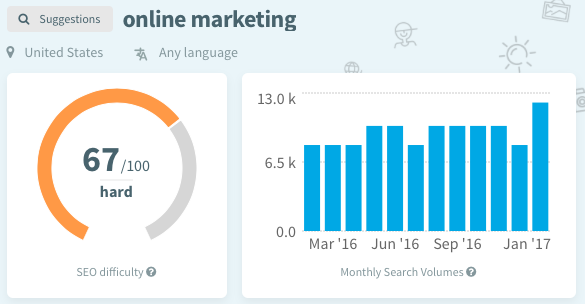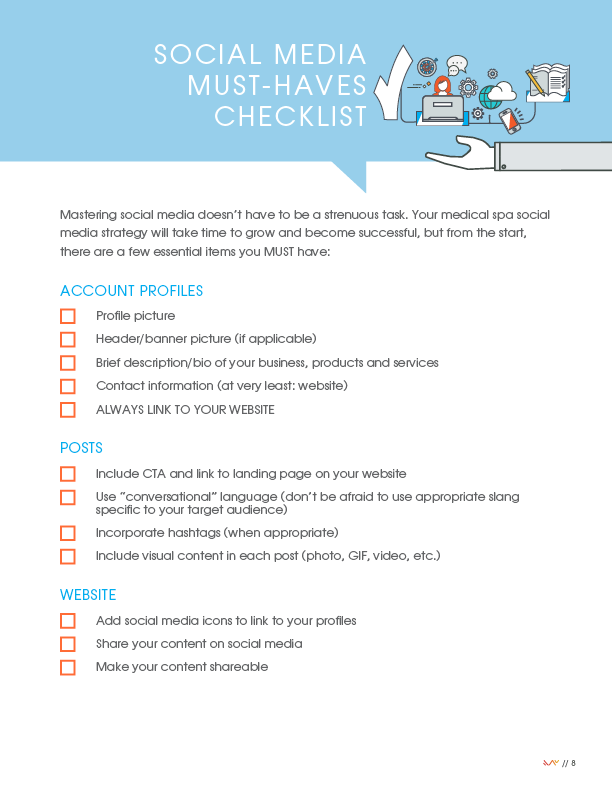//
Mar 15, 2017
Case Study: How to Get on the First Page of Google
The secret to getting your content on the first page of Google isn’t only strategic keyword placement, lengthy blogs or frequent posting.
You can’t hide a magic code or publish at a certain time of day to make your content skyrocket to the first position (despite what some SEO companies might tell you). True, you used to be able to hack your way to #1, but search engines, particularly Google, have gotten .
So what can you do?
GET SPECIFIC AND DETAILED.
For those of you who were just here for the secret, that’s as far as you need to read. For everyone else, here’s how to actually accomplish this.
To demonstrate, I will be referencing our Medical Spa Marketing Campaign. Last spring, we launched an inbound marketing campaign that targeted medical spas and their marketing needs. Using the aforementioned tactic, we were able to double our average views per post and get 53 keywords listed on the first page of Google.
Medical Spa Marketing Blogs by the Numbers (as of March 7, 2017):
- 17 total blog posts
- 690 total views
- Average of 41 views per post (102% better than our average views per post)
- 31 keywords in top 3
- 53 keywords in top 10
But how did we accomplish this? Let’s start by examining our most popular blog post from this campaign,
At a humble 650 words, this post is certainly not considered long-form content (which is widely considered to ). Yet, it is still ranked on the first page of Google for 6 keywords.

Why?
BECAUSE IT IS SPECIFIC.
The Internet is overflowing with content. So much so that it has over-saturated the market for a lot of content creators. Unless your website already has a , it can seem impossible to rank well for the keywords people are actually searching for.
Having only a moderate domain authority ourselves (in the 20s), we knew that we needed to get creative in order to rank on the first page of Google for this campaign.
FIRST, WE NEEDED TO GET SPECIFIC.
While we’re no stranger to the Internet favorite “,” we wanted to make sure we were giving readers enough information to be considered a thought leader within the medical spa marketing community. (And a list of 10 generic marketing tips wasn’t going to do it.)
To accomplish this, we began by identifying our persona, MedSpa Sarah:

Now that we had a better understanding of Sarah, we needed to address her specific pain points. We knew her main goals were to increase her client list and to retain (and hopefully even up-sell) her current clients, so we based our content around those concepts.
Below are a few examples of blogs that target those goals.
GOAL 1: INCREASE CLIENTELE
GOAL 2: RETAIN/UP-SELL CURRENT CLIENTELE
But the specificity doesn’t stop there. The last piece of the puzzle is to determine a keyword. Luckily, the more specific you get, the easier it will be to find a reasonable keyword. Take a look at the images below.
"online marketing"

"online marketing for small business"

"medical spa online marketing"

As you can see, the more specific you get with the keywords, the easier it will be for your content to rank. Typically, as keywords get more specific, they also get searched for less. While this can be discouraging, keep in mind that it will attract more qualified leads to your content. And, more importantly, it’s better to rank for a low-searched keyword than for none at all!
RELATED:
Now that we knew exactly who we were writing to and what topics we were going to address, it was time for us to get detailed.
Sarah is familiar with basic marketing principles and strategies, but she does not have the time or resources to implement these best practices.
For example, she knows she needs to have a social media presence, so writing a blog post on why her medical spa should be active on social media wasn’t going to be of value to her. What was going to be of value? Content that was detailed and had actionable tasks that she or her team could implement.
So, we wrote a couple blogs on the topic:
In addition to the blogs, we also created an eBook geared specifically on using social media for medical spas (and offered up one of the pages as a teaser).

When it comes to getting detailed, you want to make sure to offer the reader something they wouldn't get elsewhere. Whether it’s an anecdote, a case study, or a new finding related to your industry, it should add to the reader’s overall experience—because you aren’t going to get on the first page of Google with recycled content.
While more blog hits and web visits are great, they don’t mean anything if you don’t get any valuable leads. Writing for a specific audience and offering detailed content allows you to attract genuine leads who will be willing to fill out a form and interact with your business.
What was the result from using this method? A 10% conversion rate, which is roughly !
Between our three gated offers (two eBooks and one marketing audit), we were able to attract valuable leads who most likely would not have found us had it not been for those 53 keywords on the first page of Google. And, of course, we would not have been able to rank so well without the “specific and detailed” strategy.
Unfortunately, there is no magic secret to getting on the first page of Google. It takes time, thought and strategy to rank well, but by following this advice, it is much more achievable.
Boost visibility, create engagement, increase leads and make more money with Inbound Marketing
Follow our free, easy-to-follow video series designed to show how to attract and convert more leads— and make more money with these tactics.







